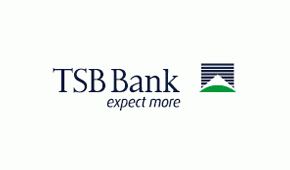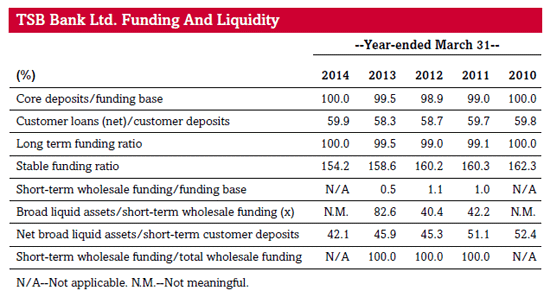
TSB has been assigned an A- credit rating by Fitch Ratings with a stable outlook, and had the outlook on its BBB+ rating from Standard & Poor's upgraded to stable from negative.
S&P says the stable outlook on its TSB rating reflects a view the bank will retain its low risk appetite, as it remains primarily focused on residential property lending and its home province of Taranaki. Fitch says the stable outlook on its TSB rating reflects the bank's conservative risk appetite that has resulted in consistently sound asset quality above the industry average for a decade.
"At the same time, TSB's simple business model has resulted in a strong balance sheet structure and sustainable operating performance. TSB's liquidity, funding and capital positions are good for an institution of its size. However, the ratings also take into account TSB's small domestic franchise, geographic concentration and lack of ability to raise capital," says Fitch. See credit ratings explained here.
S&P notes, however, that TSB's drive to diversify its lending exposure outside Taranaki hasn't yet really succeeded, with TSB's lending exposure to its home province, at close to 55%, having increased proportionally over the past few years.
"Although TSB is strategically committed to growing its business base outside of the Taranaki region, we do not expect this progressive geographic diversification to alter our view of the bank's business position in the medium term, as we currently believe TSB has a limited franchise or competitive advantage outside of Taranaki, somewhat moderating the benefits of a broader business base," says S&P.
Rural, commercial growth
S&P also acknowledges TSB's progress in boosting its business diversity, especially via rural and commercial lending, although notes this is off a low base and largely within Taranaki, albeit it has also been helped by the acquisition last year of a 26% stake in Fisher Funds Management for $32.8 million.
In the year to March TSB grew agriculture lending by $76.9 million, or 56%, to $214.727 million, commercial lending grew by $49.7 million, or 26%, to $239.175 million, and increased residential mortgage lending by $98.1 million, or 4%, year-on-year to $2.592 billion.
Speaking to interest.co.nz in late May after TSB reported a 6% drop in annual profit to $49.95 million, the bank's CEO Kevin Murphy said both TSB's lending and deposit books were split about 50-50 between Taranaki and the rest of New Zealand. TSB is striving to grow outside Taranaki and has a target for what percentage of its business it wants to source from outside its home province although Murphy wouldn't share this.
Solid Energy exposure highlighted
S&P said one factor that could cause downward pressure on TSB's rating is "the unlikely event" of the bank being forced to write-off its entire exposure to Solid Energy without implementing capital management initiatives to boost capital levels.
Last October TSB converted $13.757 million worth of Solid Energy bonds into redeemable preference shares as part of debt write-down at the beleaguered state owned enterprise. In its annual report TSB says its remaining $53.7 million worth of Solid Energy bonds are performing because they continue to meet their contractual payments with interest being paid. However, Murphy acknowledged it was possible TSB could take another hit from its Solid Energy bonds.
The most probable scenario where it could raise TSB's rating would stem from an upward revision in its assessment of TSB's risk position, S&P says.
"This could occur if the bank successfully executes its longer-term strategy of diversifying both its business mix and its business base outside of Taranaki while maintaining its currently strong asset-quality experience, and demonstrating franchise strength consistent with that currently experienced in Taranaki."
This chart comes from S&P's report

1 Comments
"S&P also notes TSB's loan-to-deposit ratio of about 60% at March 31 is comfortably superior relative to New Zealand system averages that are estimated at around 135%".
This is an indicator of adherence to the basic banking model of "take deposits in, loan % of deposited money out." It's crude without timing analysis but it also forces consideration of source of other funds, covered bonds, foreign borrowings etc typically accessed by the larger banks. It might be a good ratio to include in the bank leverage table under your savings button.

We welcome your comments below. If you are not already registered, please register to comment.
Remember we welcome robust, respectful and insightful debate. We don't welcome abusive or defamatory comments and will de-register those repeatedly making such comments. Our current comment policy is here.